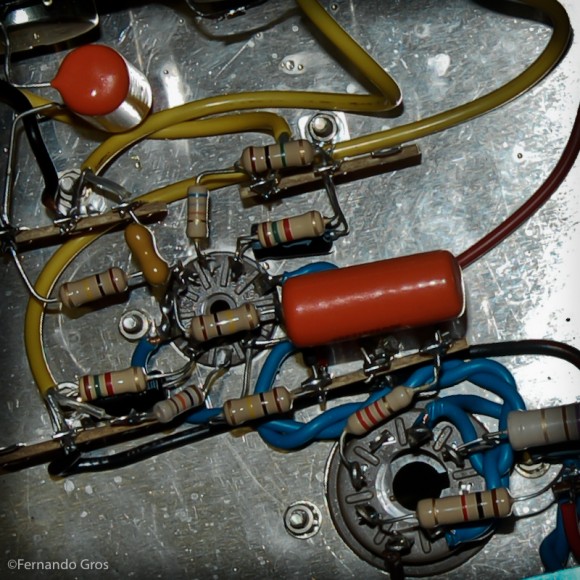The Amp Building Thing
Although I didn’t spend any time tinkering or making on my recent trip to Adelaide, I did pull some old amplifier schematics books out and cook up some ideas with my father. His background is in tube (valve) audio which, in its day, was kind of the tech/geek frontier we now associate with the web, […]
Although I didn’t spend any time tinkering or making on my recent trip to Adelaide, I did pull some old amplifier schematics books out and cook up some ideas with my father.
His background is in tube (valve) audio which, in its day, was kind of the tech/geek frontier we now associate with the web, apps and tech start ups. It’s always fascinating to me that the technology we might now consider old and antiquated was once cutting edge and new. Mark my words, first generation iPods and black PowerBooks will one day be “retro.”
In fact, this is a new golden age for old audio technology, especially in professional recording studios. And, audiophiles are buying back into vinyl and tube amps in a big way – even horn based speakers are back in vogue.
When I was a kid tube amplifiers were out of fashion for guitarists. Most players wanted (supposedly more reliable) transistor amplifiers, often with multiple channels, loads of tone controls and other effects. Even when tube amps started to come back into prominence, they mimicked the complexity that players had gotten accustomed to in transistor amps.
But, there is a certain kind of appeal in plugging a good guitar into a simple, one channel tube amp, with a limited number of controls. It’s a purity thing.
And, it’s also a freedom thing. Guitarists love to play simple tube amplifiers for the same sorts of reasons that draw people to vintage motorbikes, or sailing boats, or cooking from first principles. It’s just you and the open road, or the ocean, or the fresh ingredients.
So, we looked at the original Vox AC4 schematic and early 50s Supro design. I’ve never built an amp with a tube rectifier (the part of the circuit that feeds the correct voltage to the tubes) and I’m keen to build an amp with only one or two controls. Something simple and direct.
But, my eye also caught some of kits Mercury Magnetics sell, for upgrading current, mass produced tube amps. For example, although the new Fender Champ looks great, it sounds stiff and brittle. Mercury Magnetics sell a kit to upgrade the amp with a better speaker and better transformers – very tempting (and do-able in my Hong Kong apartment).
Part of the appeal of tube amps for me is that the electronics have a wonderfully physical nature to them. Although modern computerised devices can often be built smaller and cheaper with little effect on their performance (up to a point), tube amps are more subtle and sensitive.
The placement of the components effects their sound and performance. Tubes have sonic properties that come directly from the way they are manufactured. Transformers will sound different depending on the way they are wound and the metal used for their magnetic components. Speakers are the same – drivers with ceramic magnets have a different sound compared to those using AlNiCo, or other metals.
And, the electronic design is conceptually different as well. Sure, the same principles of electronics apply – there are circuits governed by rules and equations. But, there is no programming, which is striking given that code now permeates even the most basic of contemporary electronic devices.
Code-less sonic freedom in a box – I love it!





